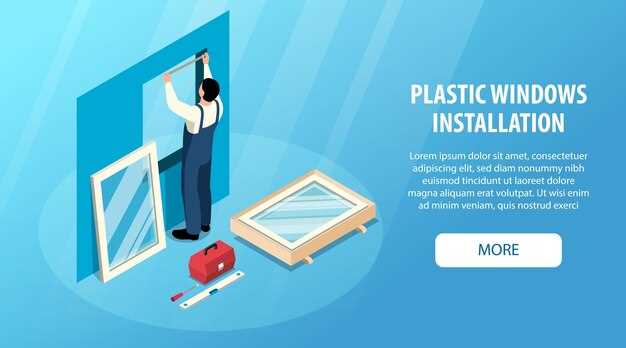
Frame damage is a serious issue that can affect the structural integrity and safety of a vehicle. It typically occurs as a result of severe collisions or accidents, where the vehicle’s frame sustains deformation or fractures. Understanding the types of frame damage and the repair process is essential for vehicle owners, as it directly impacts safety, performance, and resale value.
There are two primary types of frame damage: structural and non-structural. Structural damage refers to significant alterations to the frame itself, which may compromise the vehicle’s stability. Non-structural damage, on the other hand, may involve cosmetic imperfections or minor bends that do not affect the frame’s integrity. Identifying the type of damage is crucial for determining the appropriate repair methods.
The repair process for frame damage involves several critical steps. First, a thorough inspection is conducted to assess the extent of the damage. This is followed by frame straightening, a process where specialized tools are used to restore the frame to its original specifications. Depending on the severity of the damage, additional reinforcements or part replacements may be necessary to ensure long-term safety and functionality of the vehicle.
Identifying Frame Damage: Signs and Symptoms to Look For
Detecting frame damage is crucial for ensuring the safety and integrity of a vehicle. Early identification can prevent further complications and costly repairs. Here are the key signs and symptoms to look for.
Firstly, examine the alignment of the vehicle. If the steering wheel is off-center while driving straight, or if the vehicle pulls to one side, it may indicate frame damage. This misalignment can affect handling and overall drivability.
Another indicator is visible deformation or misalignment of body panels. Look for gaps between the doors, trunk, or hood that are uneven, as well as any signs of warping or buckling. These imperfections can reveal underlying structural issues.
Inspect the vehicle’s undercarriage for any noticeable bends or fractures. These damages may not be immediately visible from the outside but can compromise the frame’s structural integrity. Additionally, check for rust or corrosion, as these factors can weaken the frame over time.
Listen for unusual noises while driving, such as creaking or popping sounds when going over bumps. These noises may suggest that parts of the frame are compromised or that suspension components are affected due to frame damage.
Examine the condition of the tires. Uneven tire wear can be a direct consequence of frame misalignment. If you notice that one side of the tires is wearing more quickly than the other, this could signal potential frame issues.
Finally, if a vehicle has been in a significant accident, even if it seems to be functioning well, a thorough inspection is recommended. Seeking professional evaluation can help identify hidden damage and ensure proper repair if needed.
Assessing Repair Options: When to Fix vs. Replace

Determining whether to repair or replace a damaged frame is a critical decision in the vehicle restoration process. This choice can significantly impact both the car’s performance and its market value. Here are several factors to consider when making this decision:
- Extent of Damage:
- Minor damage: Small dents or scratches often warrant repair.
- Moderate damage: Issues that impact structural integrity may require deeper analysis.
- Severe damage: Extensive frame bending or cracking typically necessitates replacement.
- Repair Costs:
- Estimate the costs of repair versus replacement.
- Consider labor costs; repairing may be cheaper initially, but hidden costs can arise.
- Assess the availability of parts for repairs; sometimes, sourcing parts is more expensive than a complete replacement.
- Vehicle Age and Value:
- Older vehicles may have lower resale values, making repair less financially attractive.
- For newer models, investment in repair could enhance long-term value.
- Consider how the damage affects overall vehicle aesthetic and functionality.
- Future Use:
- If the vehicle is to be kept long-term, prioritize quality repairs.
- For quick resale, understand the implications of both options on saleability.
- Consider intended use; a car for regular commuting may require more reliability than a weekend vehicle.
- Safety Considerations:
- Frame repairs may not always restore original safety specifications.
- Choose replacement if safety is compromised, especially for collision-prone areas.
- Consult with professionals to gauge safety implications of repairs versus replacement.
In conclusion, the decision to repair or replace a frame requires careful evaluation of damage severity, costs, vehicle value, and safety. Engaging with experienced professionals can provide valuable insights into the best course of action for specific circumstances.
The Repair Process: Steps Involved in Restoring Frame Integrity

Restoring frame integrity is crucial after a vehicle has suffered damage. The repair process involves several systematic steps to ensure the frame is brought back to its original condition. Below are the key steps involved in this comprehensive process:
1. Initial Assessment
The first step is to conduct a thorough inspection of the vehicle to evaluate the extent of the frame damage. Technicians utilize specialized equipment to identify bent or twisted areas that may not be visible to the naked eye. This assessment forms the basis for determining the necessary repairs.
2. Documentation and Estimation
Once the assessment is complete, technicians document their findings, including photographs and detailed descriptions of the damage. A repair estimate is then prepared, outlining the required labor and parts needed to restore the frame integrity. This estimate is typically presented to the vehicle owner or insurance adjuster for approval.
3. Disassembly
To access the damaged parts of the frame, disassembly of the vehicle may be required. This step involves removing components such as bumpers, panels, and sometimes even the engine. Proper organization of removed parts is essential for reassembly.
4. Frame Straightening
Once the vehicle is disassembled, the next step is to realign the frame. This process uses hydraulic equipment and frame machines to apply force to bent areas, restoring them to their correct specifications. Precise measurements are taken throughout to ensure the frame returns to its original shape.
5. Welding and Reinforcement
If there are sections of the frame that are irreparably damaged, they may need to be cut out and replaced. Skilled technicians weld new sections into place, ensuring that the structural integrity is maintained. Reinforcement may also be added in critical areas for added strength.
6. Reassembly
After the frame has been repaired and straightened, the vehicle is reassembled. All components that were removed during disassembly are installed back into their correct positions. Technicians ensure that every connection is secure and adheres to safety standards.
7. Quality Control
Following reassembly, a thorough quality control check is performed. This includes inspecting the vehicle for proper alignment and functionality of all parts. Test drives may also be conducted to ensure that the vehicle handles correctly and safely.
8. Final Inspection and Release
The last step involves a final inspection to ensure that all repairs meet industry standards and that the vehicle is safe for road use. Once approved, the vehicle is ready to be returned to the owner, often accompanied by a report detailing the repairs made and any new components installed.
This structured approach not only ensures that frame integrity is restored but also enhances vehicle safety and performance, thus safeguarding both the driver and passengers.

